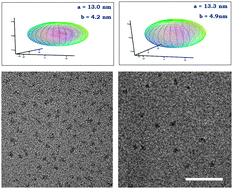Mixed micellization between natural and synthetic block copolymers: β-casein and Lutrol F-127†
Abstract
Amphiphilic

- This article is part of the themed collection: scattering methods applied to soft matter
* Corresponding authors
a
Department of Biotechnology and Food Engineering, Technion – Israel Institute of Technology, Haifa, Israel
E-mail:
dganitd@tx.technion.ac.il
b Department of Chemical Engineering, Technion – Israel Institute of Technology, Haifa, Israel
c Russell Berrie Nanotechnology Institute, Technion – Israel Institute of Technology, Haifa, Israel
Amphiphilic

 Please wait while we load your content...
Something went wrong. Try again?
Please wait while we load your content...
Something went wrong. Try again?
I. Portnaya, R. Khalfin, E. Kesselman, O. Ramon, U. Cogan and D. Danino, Phys. Chem. Chem. Phys., 2011, 13, 3153 DOI: 10.1039/C0CP01321H
To request permission to reproduce material from this article, please go to the Copyright Clearance Center request page.
If you are an author contributing to an RSC publication, you do not need to request permission provided correct acknowledgement is given.
If you are the author of this article, you do not need to request permission to reproduce figures and diagrams provided correct acknowledgement is given. If you want to reproduce the whole article in a third-party publication (excluding your thesis/dissertation for which permission is not required) please go to the Copyright Clearance Center request page.
Read more about how to correctly acknowledge RSC content.
 Fetching data from CrossRef.
Fetching data from CrossRef.
This may take some time to load.
Loading related content
